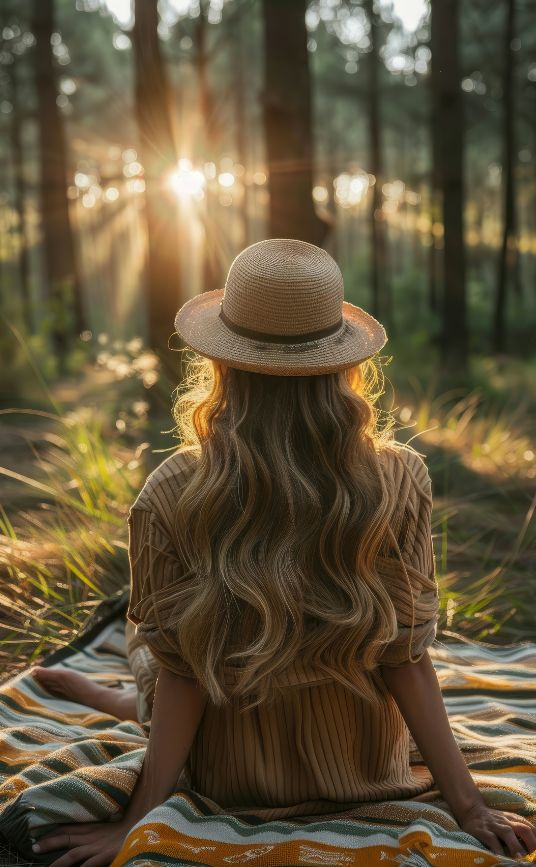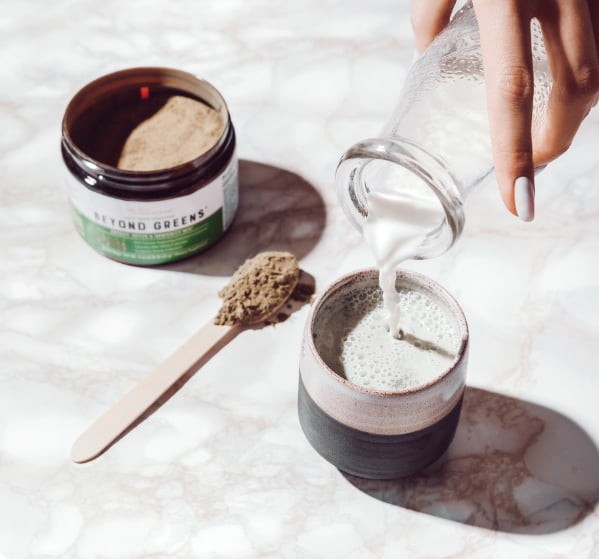Wouldn’t you just love to gather your own food and herbs from the wild? Many of us have never felt that kind of connection to the natural places around us, and now we are starting to crave that back-to-the-land kind of living that speaks so deeply to the core of our being. Foraging was once an essential part of life, and now people are starting to reclaim the practice that connects our modern lives with the archaic essence of humanity.
Foraging is a beautiful way to reconnect with nature, but there are some fundamentals you MUST learn to do this safely. We must also be mindful of the impact that our foraging has on the landscape and the creatures that depend on wild foods for survival.
What Is Foraging?
Foraging is an age-old practice of picking wild plants and fungi for consumption. This practice has been intertwined with possibly every indigenous culture on earth. From the dawn of humanity and still today, people have relied on the abundance of the earth for sustenance. The act of foraging can include gathering mushrooms, fruits, leaves, roots, seeds, and entire plants for preparation and preservation.
To begin, you will need a good understanding of the plants in the ecosystem where you will be foraging and some helpful tools to take along on your foraging adventures.
♦ Plant clippers. Use clean, sharp clippers designed for pruning, so plants don’t get damaged from tearing or pulling leaves and fruits from their stems.
♦ Gloves. Bring thick gloves if you are going to be foraging from plants that may protect themselves fiercely, such as raspberries or blackberries.
♦ Shovel. A small shovel or spade for digging up roots.
♦ Basket. Baskets, bowls, or boxes to carry your foraged goods in.
♦ A plant identification guidebook. This will help you in figuring out which plants to forage from.
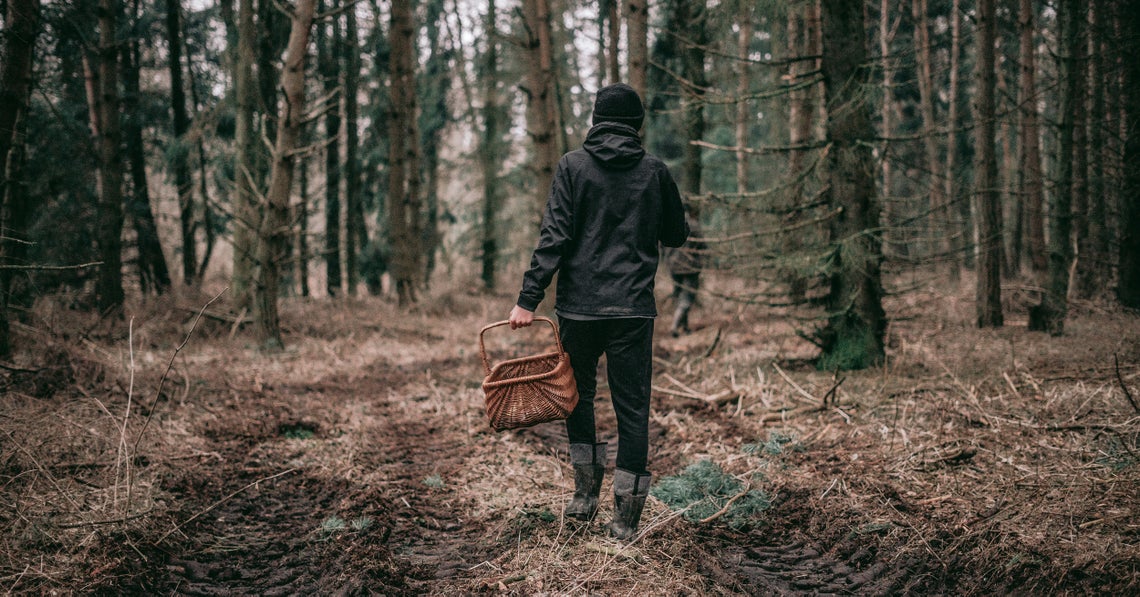
Before you get too excited and just go out picking right away, remember there are do’s and don'ts for this practice, and your safety and the health of the local environment depend on you following a few rules. Usually, we tend to believe that rules are meant to be broken, but not with this. It’s important to respect the ecology and learn about what plants should not be harvested.
Where to Go Foraging
If you are familiar with your surroundings, there may be wild places you know of that seem like good places to forage. Start learning about the wild places in your area, or find a local foraging group to join. Look for a place with a lot of diversity for the best chance to find an abundance of wild foods. A lot of weedy edibles like to hang out on the edges of fields and around old farmland. You can even forage food in a lot of cities. Just make sure you have permission to gather in certain areas and watch out for places close to busy roadways, as car exhaust can settle on nearby plants.
Make sure the areas you are foraging from have not been sprayed with weed killers, pesticides, or other chemicals. Your neighbor might have an abundance of dandelions in their front lawn, but unless you are sure they haven’t been sprayed (don’t be afraid to ask!), don’t eat them. They might even appreciate you pulling their weeds for them!
If you are new to foraging, take some time to get to know the habitats around you before you get started. There are delicate ecosystems that should not be harvested from unless you have developed a relationship with the plants in the area. Observation should be the first step. Learn about the plants and what animals may depend on them for food. There may also be other people who have a long-standing connection with the plants you might be trying to harvest or indigenous people who rely on these wild foods for their survival and traditions.
First Steps
Find a Guide
Seek out a person, book, class, or group to help you get the lay of the land and how to recognize what plants are edible in your area. This may give you a chance to learn about any endangered plant species and learn what needs to be preserved in the wild spaces around you. Look for herbalists that may teach classes about local plants or wild food enthusiasts that offer classes or workshops. Get a good reference book and learn how to properly identify plants before you eat anything from the wild.

Proper Identification
Be 100% sure! Never eat a plant that you do not have complete assurance of identification. Before setting out, learn about the poisonous plants where you will be foraging and learn to recognize them. Don’t trust an app, as these are not always reliable. You can get a regional book to help you “key out” a plant, and there are websites that can help you with this process. This will teach you how plants are identified and help you get to know what details to look for.
Share the Abundance
Because other people, insects, and animals may also depend on the foods you are foraging, don’t take very much. Start small, and revisit the place you’ve gathered from to see if there is still an abundance over time. Some foragers will say not to take more than 10% of what is growing, but in some cases, that may even be too much. Leaving fruits to ripen and seeds to disperse will help the plants to reseed themselves, contributing to future generations.
What You Can Eat From the Wild
There is an incredible variety of wild foods that you may be able to gather for meals or nutritional support. Keep in mind that whatever you harvest will need to be prepared or preserved right away. Don’t take more than you need, and make sure nothing goes to waste. It may take some time but learning about the seasonal patterns of the plants that bring us wild foods will help you learn the best time to forage from them. There may be wild, nutritious greens early in the spring, while berries may come along midsummer, and nuts, seeds, or some fruits may not be ready until the fall. It really depends on the plant and where you are in the world, as there are seasonal variations that make harvest times a little different everywhere you go.
Nettles
Also known as “stinging nettles,” these are incredibly nutrient-dense plants that can be found in many parts of the world. They are a common, weedy type plant that loves to grow near water. They are a dark green plant with serrated leaves and hairy stems. Nettles (Urtica dioica) are often quite simple to identify because of their notorious “sting” they give to the unsuspecting passersby. Make sure you wear long sleeves and bring thick gloves to avoid being stung. To harvest the leaves, clip the tops off of the plants, leaving about 12 inches or so of the stem to encourage more growth.
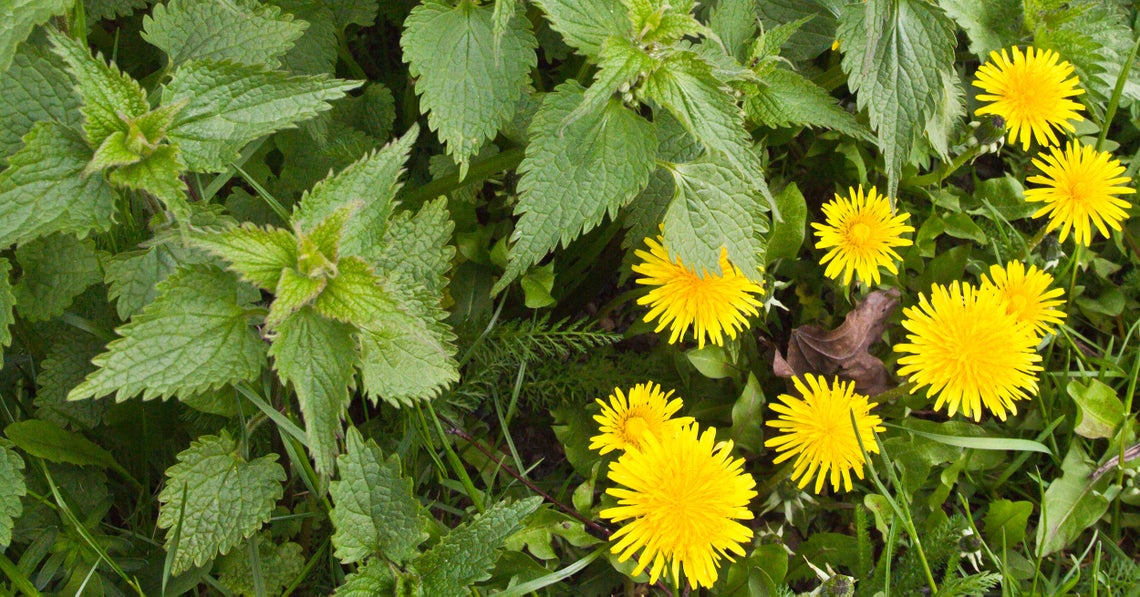
Dandelions
The modern lawn grower has waged war on one of our most precious wild foods — the dandelion (Taraxacum officinale). All parts of this common plant are edible and incredibly nutritious additions to any diet. Make sure that the plants you are harvesting from have not been sprayed before gathering. These little drops of sunshine pop up in all kinds of places and are a good plant to start with as they are very recognizable and easy to gather. To harvest the flowers, you can simply pluck them off or clip them. They will need to be eaten or preserved right away as they don’t last long once picked. For the leaf, clip the larger outer leaves right at the base of the stem; usually, they will continue to grow back throughout the growing season. The roots are usually dug up in the fall or spring. Try not to break or scrape the roots as you are harvesting, if possible. Although these plants are common and quite recognizable, there are some lookalikes, so make sure you’ve got the right plant!
Wild Berries
Berries of all kinds can be found around the edges of forests and fields, often along rocky hillsides, and usually somewhere near where there is a source of water. Raspberries and blackberries are quite common, and you can find blueberries and huckleberries in certain areas. Triple-check your identification before eating any wild berries, or go along with someone who knows what to look for. Blackberries and raspberries are quite easy to identify once you get to know the leaf shape and the uniqueness of the berries. The leaves can also be harvested from these two common berry plants for herbal uses.
Watch out for poisonous berries such as holly berries, mistletoe berries, and Jerusalem berries. Find out if they grow in your area before setting out on the trail. Bring a guidebook along with you so you can make sure you know the exact kind of berry you are gathering.
A note about elderberries. Elderberries are abundant in many places and are a fun food/herb to forage. However, some species are poisonous (notably the red elderberries), and others are safe to eat but need to be fully ripe and cooked to reduce semi-toxic substances that occur in this plant. Never eat the stems or leaves of elder plants.
Herbs
There is an entire spectrum of herbal plants to be found in wild places. The choice of whether you should harvest herbs should depend on a few factors. First, of course, is proper identification. Some herbs are not easily identified, and there may be poisonous look-alikes. You will also want to consider if you actually need the herb and how to use it in herbal preparations. Then you should research the safety of the herbal plant, as some herbs should only be used in very small doses or by skilled herbalists. Because of the mass appeal of various herbal plants, some have been overharvested in the wild and need to be preserved in their wild spaces. Consult the United Plant Savers At-Risk Plants list to make sure the plant you are harvesting doesn’t need to be protected.
Here are a few herbs that are generally safe and abundant:
♦ Plantain (Plantago major or Plantago lanceolata)
♦ Chicory (Cichorium intybus)
♦ Purslane (Portulaca oleracea)
♦ Self-Heal (Prunella vulgaris)
♦ Mallow (Malva sylvestris)

What to Avoid When Foraging
Mushrooms and Fungi
Mushrooms and other edible fungi are notoriously difficult to properly identify. There are dangerous, sometimes deadly, consequences from getting it wrong. If you are really interested in wild mushroom foraging, find someone to guide you. There are classes and groups you can join that will teach you the basics and help you determine if you’ve got the right mushroom.
Luckily, there are plenty of other ways to get the benefits of mushrooms in your life. You can find kits that can get you started growing mushrooms at home, or you can look for local growers in your area. If that doesn’t appeal to you or those options aren’t available, we can help you out with our Beyond Brew mushroom blend. It has an incredible blend of functional mushrooms, such as reishi and lion’s mane, that have a plethora of health benefits. You can simply stir it into your coffee or have it as a coffee replacement for a delicious and energizing start to your day without caffeine!
Lily of the Valley and Other Poisonous Plants
Lily of the valley is a plant with adorable little flowers, but it’s dangerously poisonous. It has broad leaves and white flowers that resemble little bells hanging off the stem. The flowers are easily recognizable but are not always present, so beware of confusing them for something else. Often mistaken for wild garlic, it can be incredibly dangerous. This is a good example of why researching the poisonous plants where you are foraging and learning how to recognize them is a good idea.
There are other plants that will put you in danger if consumed (or even touched) that might be mistaken for wild foods. Look up pictures of wild hemlock and water hemlock and become familiar with them so you can know what they look like. These are often mistaken for wild carrots or other herbs but are very dangerous. There are some nightshade berries that are edible, but some are toxic, so it would be best not to harvest any unless you are with someone who has a lot of experience with those kinds of plants. The best advice is — when in doubt, don’t touch it and don’t eat it!
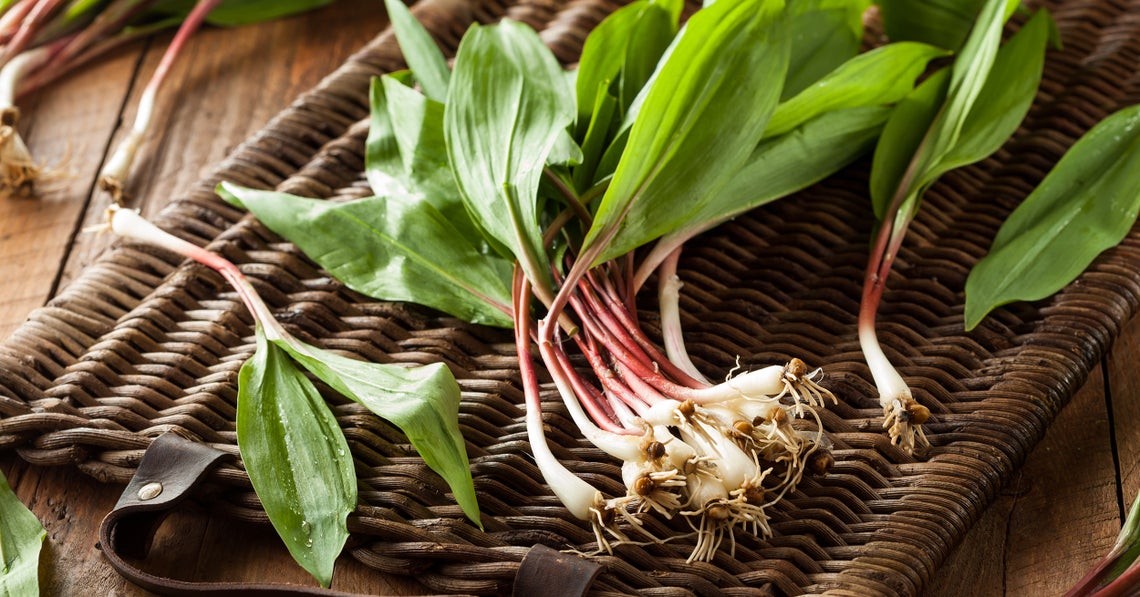
Ramps and Other At-Risk Plants
Ramps are a popular foraging food, but in some areas, their populations have gotten depleted from too much harvesting. They are a relative of garlic and onions and have a long tradition of being a foraged food in some places. They are slow going, and it takes up to five years until they are able to set seeds. They only grow in specific conditions, and efforts are underway to meet the demand with forest-grown ramps and teach people how to harvest sustainably to preserve this precious species.
This is similar to the story of other wild plants that have been decreasing in numbers due to overharvesting or habitat loss. For example, wild echinacea was nearly wiped out in the 1970s due to an explosion in popularity. Ginseng, goldenseal, arnica, and white sage are other popular herbs that need protection and should not be harvested in the wild. If this is an important issue to you, get involved with United Plant Savers or other preservation organizations that might be in your area.
Waking up to Wellness
Foraging for wild foods is an activity that can connect you to the land where you live or send you on your way to new adventures. It’s rewarding but also requires awareness of practices that keep you safe and the local ecosystems intact. The preservation of wild plants and fungi is an ever-growing issue in the supplement industry, and Live Conscious® is dedicated to sourcing our ingredients as sustainably as possible.
With the sudden popularity of functional mushrooms, there is a great concern for the preservation of our wild fungal allies as well. Species such as chaga (Inonotus obliquus) and cordyceps (Cordyceps sinensis) have a long history of herbal use but are now being harvested at an alarming rate to fulfill worldwide demand. We have chosen farm-grown functional mushroom extracts for the Beyond Brew blend so that we can provide their potent benefits without harming wild populations. Enjoy the bounty of these mushrooms while being assured they are safe, certified organic, and come from a renewable source. Even if you aren’t interested in foraging, learning about the plants and fungi around you can cultivate a deep connection with the earth and the beautiful abundance that resides in wild places.







